Introduction
This report aims to determine the impact of individual metrics on annual restaurant sales or the increase in those sales from the previous year. Specifically, the percentage of the educated population with a bachelor’s degree within a three-mile radius, their median income and median age, and the percentage of loyalty card use from net sales were used as independent variables for the analysis. The dependent variables were annual sales per square foot and the increase in that figure from the previous year. Data from 74 restaurants were used for the analysis: the raw data is shown in Table 1.
Table 1
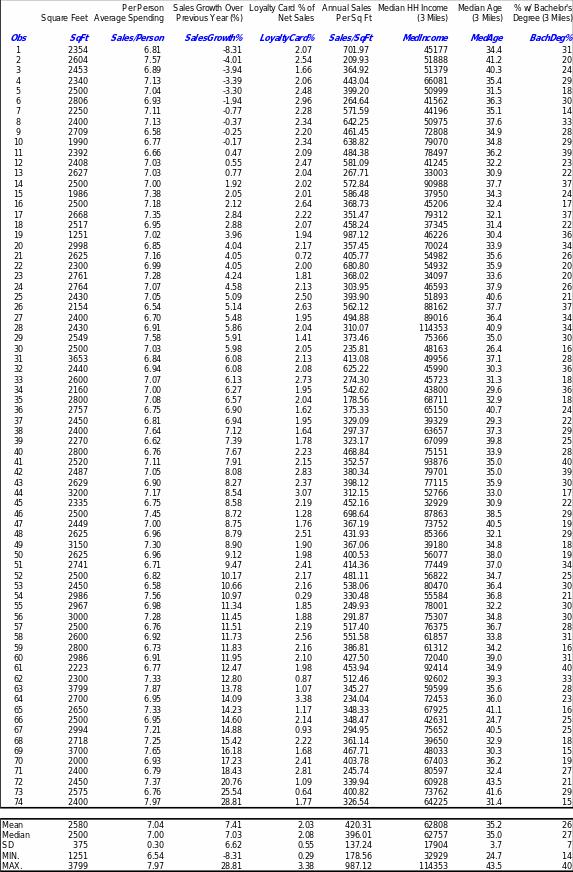
Analysis
Constructing a scatter plot for the relationship of annual sales per square foot to the proportion of the educated population was necessary. From Figure 2, the relationship has an upward trend, which means that the percentage of the educated population increases, and so does the annual sales. The coefficient of determination is equal to 0.1169, which means that the constructed regression model explains only up to 11.69% of the data variance in the set (Bloomenthal, 2021). The proposed regression equation should be treated with caution: an increase in the share of the educated population by every one percent leads to an increase in annual sales of 6.6996. At the zero point, the defined annual sales per square foot are 244.03, which can be regarded as a reference point to calculate the effect of the share of the educated population on sales.
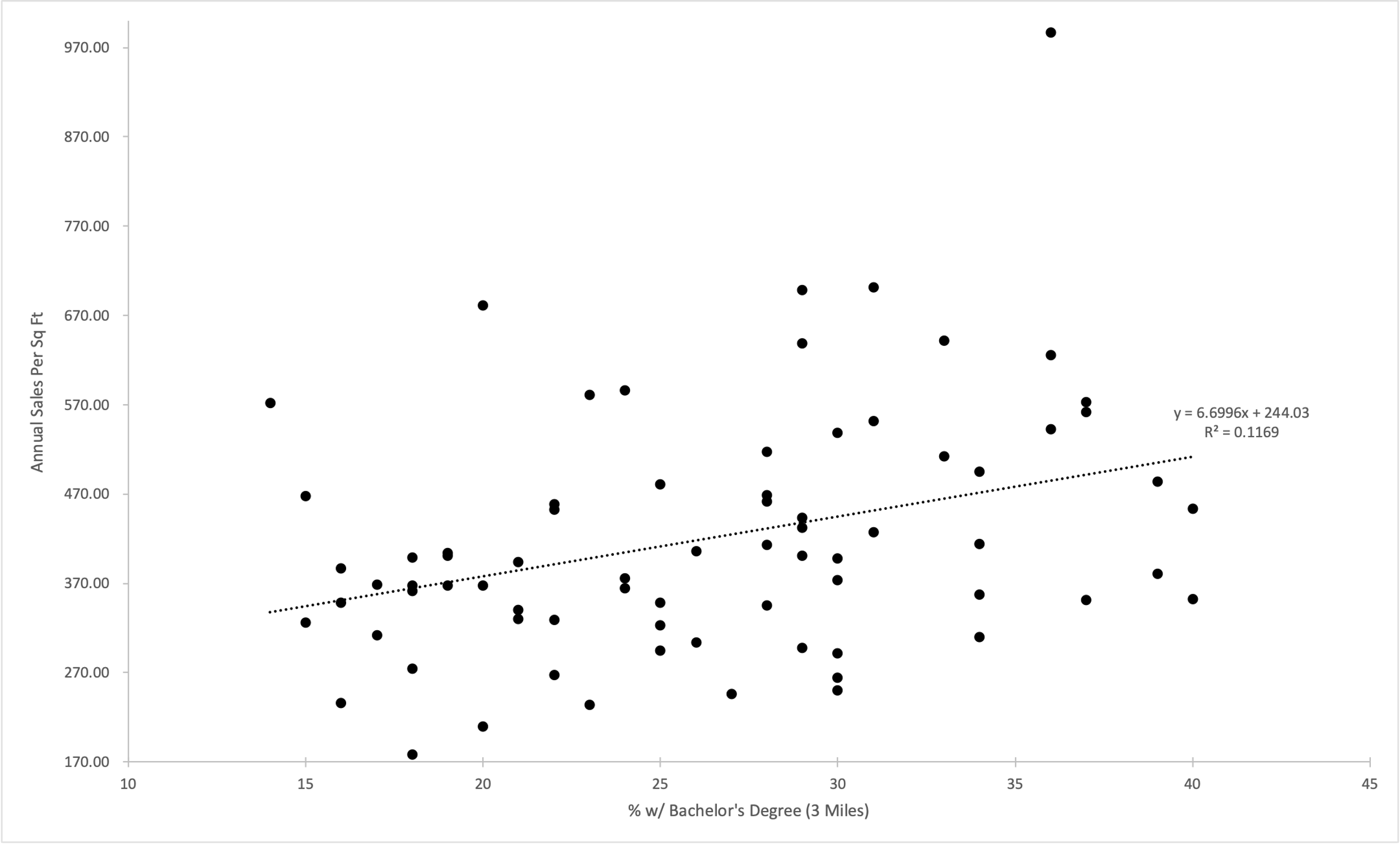
The analysis looked at the impact of median income on annual sales per square foot: the relationship had a fragile downward linear trend, but it would be more correct to say that it was almost constant (Fig. 2). The R2 was 0.0005, which meant that the model explained only 0.05% of the variance. This is a meager figure, which corresponds to the unreliability of the constructed linear model. However, if we accept the significance of this regression, the results show that for every one-unit increase in median income, there is a 0.0002 unit decrease in annual sales per square foot. At the zero point, when income turns out to be zero, annual sales per square foot are 431.11. In general, this analysis demonstrated the virtually non-existent effect of median income on annual sales per square foot and the overall unreliability of the linear regression model constructed.
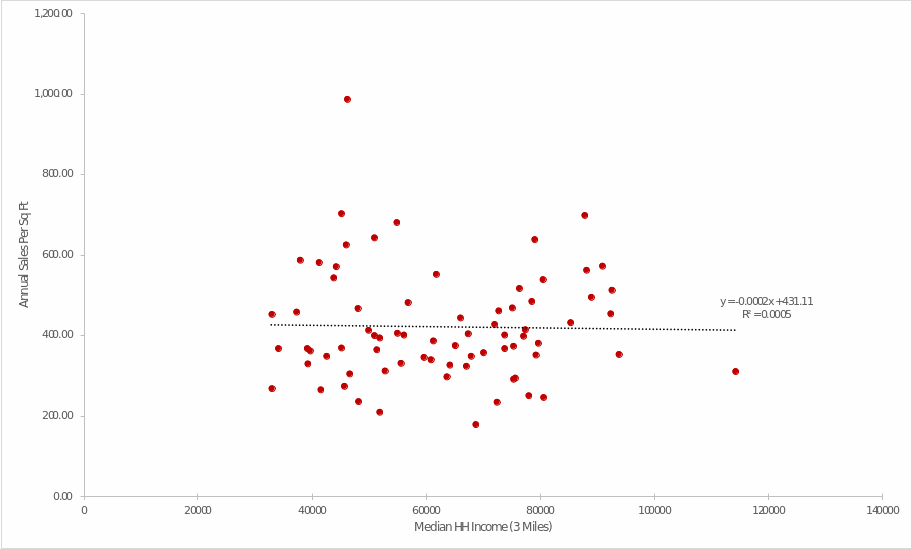
Figure 3 shows the relationship between annual sales per square foot and median age. Generally speaking, this relationship shows a downward trend, which means that annual sales per square foot will decline as the median age increases. According to the regression equation shown, as the median age increases by each unit, the annual number of sales per square foot decreases by 2.2452. At zero, when the median age is zero, the annual number of sales per square foot is 499.34. Interestingly, the y-intercept appears meaningless in this case, as with the median income, because a zero median age value cannot be realistic in practice. Therefore, this metric should be viewed as an error in the regression analysis. Overall, the regression model was also unreliable, as it explained only 0.36% of the variance in the set.
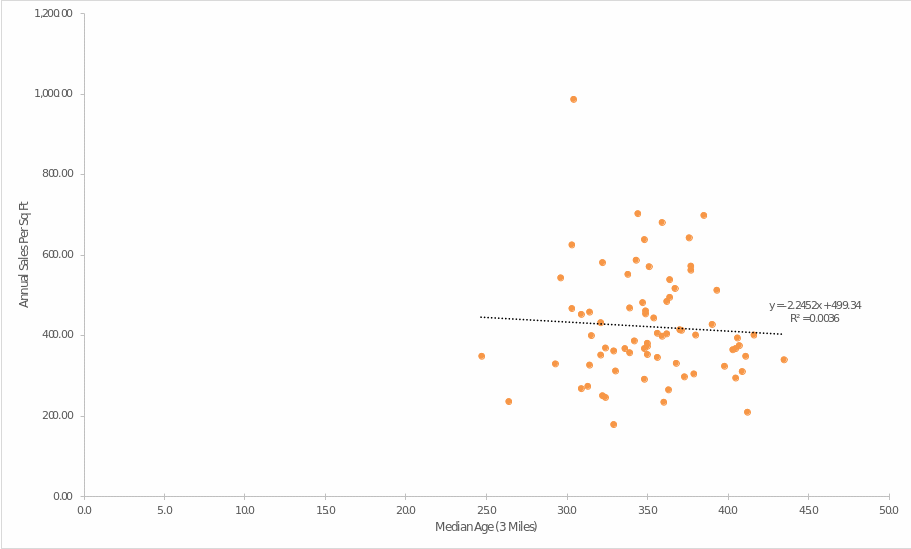
Finally, Figure 4 shows the dependence of Sales Growth Over the Previous Year (%) on the Loyalty Card % of Net Sales. This dependence has a strong negative tendency to grow, and with the equation, as the Loyalty Card % of Net Sales increases by each percent, Sales Growth Over the Previous Year (%) decreases by 3.5596%. At the zero point, when the Loyalty Card % of Net Sales is equal to zero, Sales Growth Over the Previous Year (%) is 14.628, which can be considered as a reference point, from which there is a steady decrease with increasing Loyalty Card usage. The reliability of the model determined by the determination coefficient is equal to 8.81%, which in comparison to other models (except for Fig. 1) in this analysis, defines the regression as more dependable.
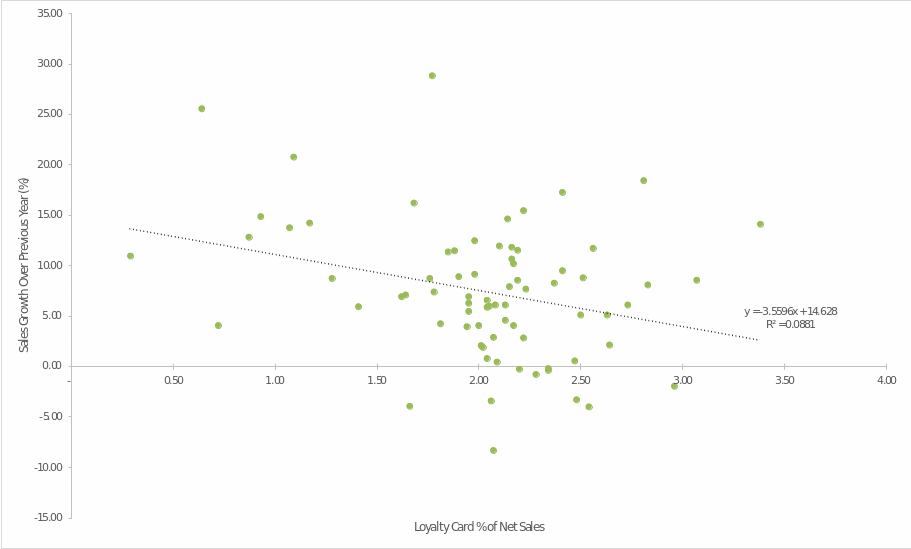
Conclusion
The results showed that abandoning the use of loyalty cards and increasing the proportion of the educated population positively affected annual sales growth because the corresponding regression models were ascending; no dependable models were obtained for median age and income, so they should be excluded. Accordingly, for effective expansion, it is recommended that the first step is to abandon the use of loyalty cards and expand to regions with higher rates of local education. For more accurate results, it is also recommended to turn to the survey as a method of data collection, which will allow us to directly study the education of people in the region and evaluate how effective is the decision to expand into a particular area.
Reference
Bloomenthal, A. (2021). Coefficient of determination. Investopedia. Web.